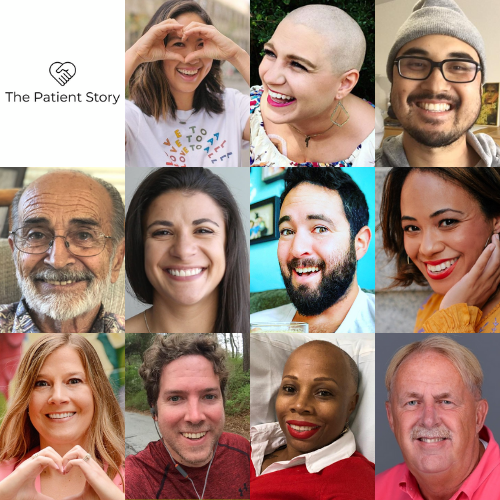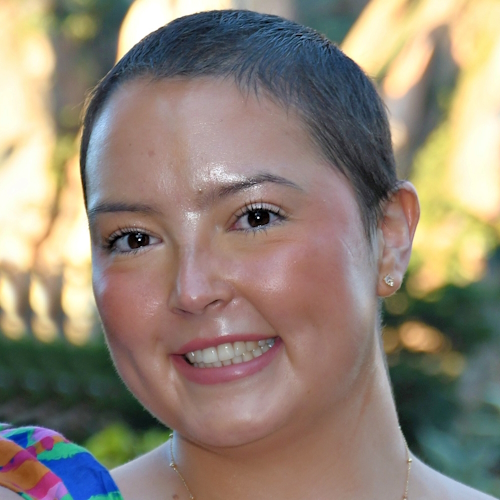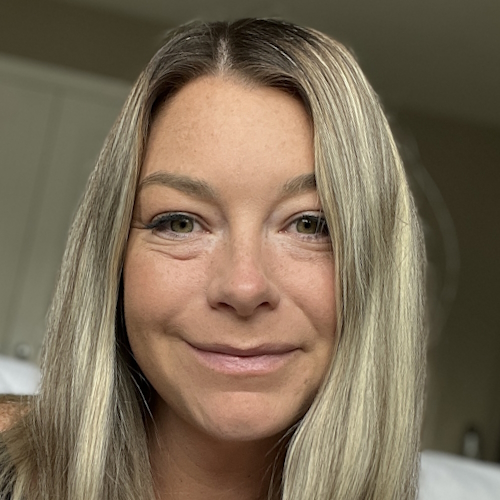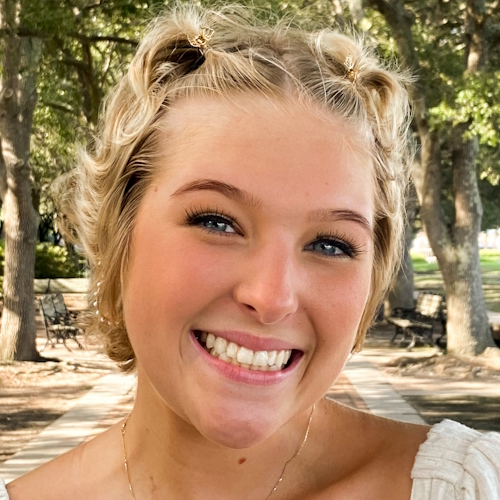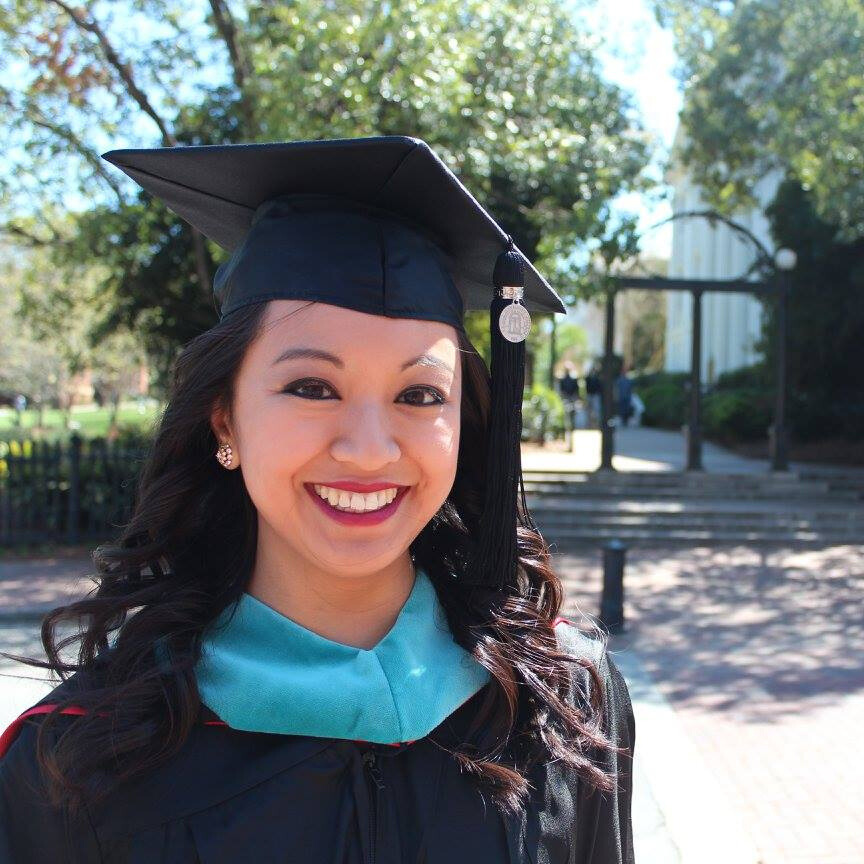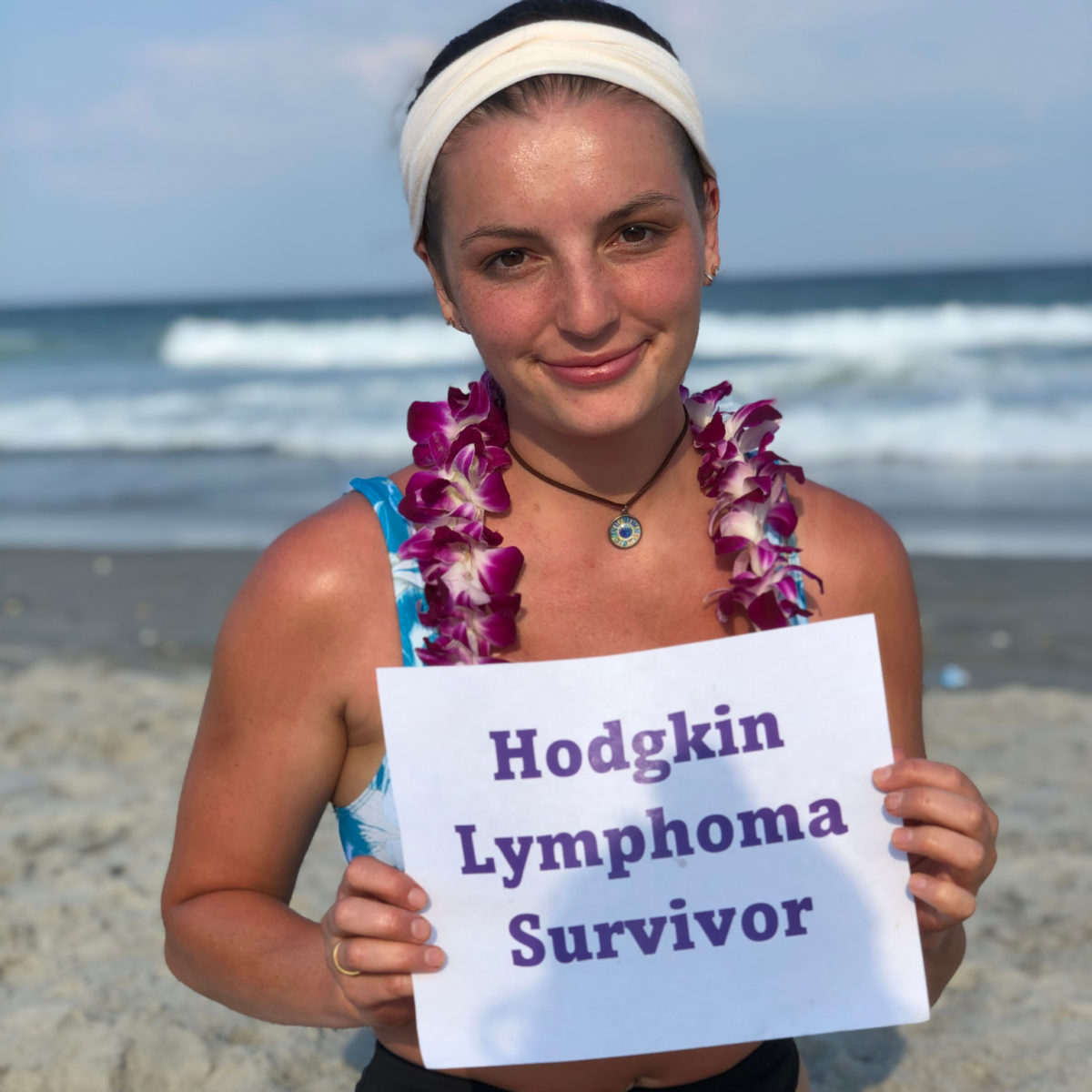Lisa’s Stage 4A Nodular Sclerosis Hodgkin’s Lymphoma Story
Lisa’s* life changed as a young adult, diagnosed with stage 4 Hodgkin’s lymphoma. She underwent 4 rounds of ABVD chemo and then 8 more rounds of the chemo without bleomycin.
Explore her story below, where she also shares her experience with hair loss, finding a cancer community and the kind of support she felt was most helpful.
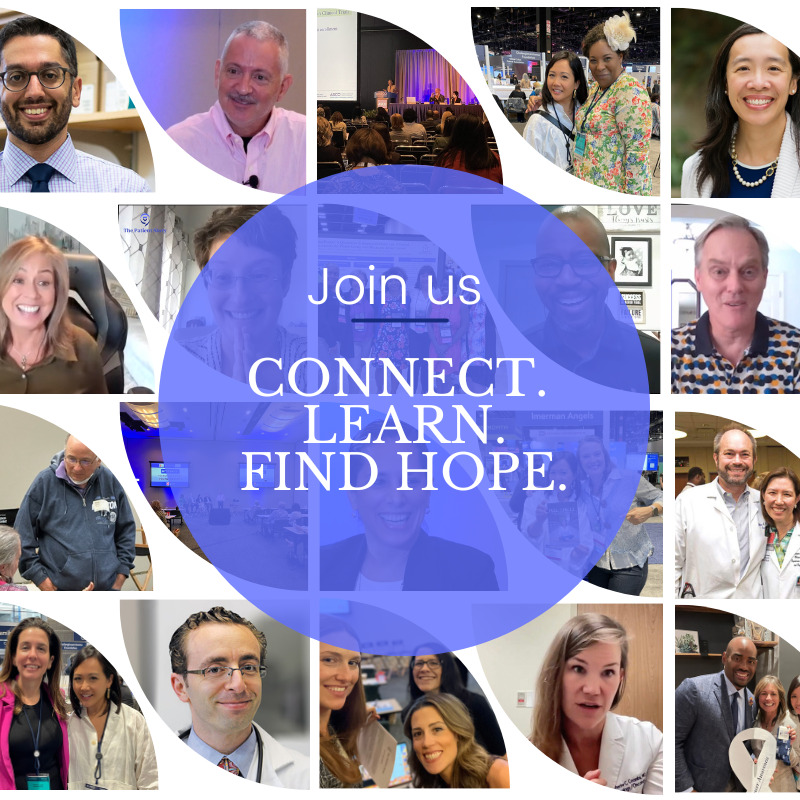
- Name: Lisa*
- *Different name to protect privacy
- Diagnosis: Hodgkin’s lymphoma
- Subtype: Classical, nodular sclerosis
- Staging: 4A
- 1st Symptoms:
- Extreme lower back pain
- Treatment:
- Chemotherapy
- 4 rounds of ABVD
- Adriamycin (doxorubicin)
- Bleomycin
- Vinblastine
- Dacarbazine
- 8 rounds of AVD (no bleomycin)
- Infusions every 2 weeks
- 4 rounds of ABVD
- Chemotherapy
- Diagnosis
- Chemotherapy
- Reflections
- No evidence of disease
- Describe the hair loss
- Support system and caregivers
- Advice for people who want to help patients but don't know how
- Finding your cancer community
- How did cancer affect your relationship with your significant other?
- What advice do you have for other young couples?
- New life perspective
- What advice do you have for someone who has just been diagnosed?
This interview has been edited for clarity. This is not medical advice. Please consult with your healthcare provider for treatment decisions.
The only way you can go is forward, so keep going. You have a community of people who are waiting to support you and love you.
I hope you’ll connect with those around you and other cancer survivors, because we are here for you.
Lisa
Diagnosis
What were your first symptoms?
One night at the end of January, I was about to go to bed. I was struck with this extreme, sudden lower back pain. It felt like someone was stabbing me in the back.
It was this crazy pulsating pain. It radiated through my hips and down my legs. It was so scary because it went from zero to 100. I tried to switch my position to see if that could fix it, because I was so confused.
Nothing helped. I was so shocked. I tried to stand up, and I couldn’t because the pain was so unbearable. I collapsed on the floor and crawled to my parents’ room. They gave me pain medicine, and it went away.
That was the first symptom. The pain would subside with medicine, and then it would come back in varying degrees for the next 3 months before I was diagnosed.
For about 2 weeks, it would come back in the evening. About 3 weeks later, it was constant, so pain medicine became my best friend for a while.
When did you first go to the doctor?
I went to the chiropractor first. I went 2 days after the pain started. I have a great relationship with him, so I was going 2 or 3 days a week for 2 months until he wanted to get me an X-ray.
He thought it could’ve been a few other things, but after that amount of time, he said it should’ve been better. That led him to wanting me to get the X-ray.
When there was no structural damage on my X-ray, that’s when I got an MRI.
He thought it was just a cyst or a pinched nerve or something. No one was expecting anything to come up.
Were you anxious about the scans?
I had been in so much pain. I just wanted to get the X-ray and MRI results back so I could finally have an answer. I wasn’t even really nervous. I just wanted to get it done.
I was really only nervous when I got the email that the report was ready. I think even then I was just mostly ready to know what could possibly be causing that much pain.
When I got the email, it said, “Highly abnormal bone marrow in back and pelvis. Could be signs of leukemia or lymphoma.”
That was the first time I had even remotely thought about that. It freaked me out, so I called my parents. That’s when they called to get me an appointment with an oncologist for the next morning.
»MORE: Dealing with scanxiety and waiting for results
Describe the bone marrow biopsy
It was a walk in the park for me. I just wanted an answer, so I was willing to go to any length to get it. I was like, “Bring it on.”
She laid me down on my stomach to access the bone in my lower back that was causing the pain.
I couldn’t see anything. I had to look forward. I was looking at my mom, and she was making faces the whole time.
The doctor had this tool, and she was cranking it to get into the bone and grab some marrow and even a piece of the bone.
She told me I had abnormally strong bones, so it took her a good while to get the sample she needed. I could see her out of the corner of my eye just cranking away. I was fully numbed, so I could just feel pressure.
It was bearable pain for sure. It wasn’t bad when you consider what’s actually happening. I was a little bit sore for the next few days, but I was able to get up and walk out.
Were you nervous about the CT scan?
The CT scan was after the biopsy, and I was only nervous because lymphoma hadn’t been ruled out. I still didn’t have a definitive answer at that point, so I was nervous about the results.
That was mainly because CT scans can show tumors, and that was my biggest concern. I wasn’t nervous about getting the dye or going into the actual machine or anything.
Describe the lymph node biopsy
That one was surgical, so I don’t remember much. It was my first surgery, so I was nervous about going under anesthesia for the first time.
I was excited to get answers, though, because this would tell me what was wrong.
I woke up without much pain. The pain hit me a few hours later when the strong pain meds started wearing off. I had to stay overnight because I had a breathing chest tube.
Where they had to take the lymph nodes from was near my lung. There was fear of a collapsed lung, so I had to stay for observation. The pain wasn’t coming from the actual surgery but from the tube.
I got great care. I had pain meds every 3 hours, and when I got the tube out the next day, it was almost immediate relief. I was just sore for a few days.
How did you get the diagnosis?
When I met with the oncologist for the first time, she didn’t jump to the conclusion that it was cancer right away.
My white blood cells had come back normal. I didn’t have any symptoms other than the back pain. That was pretty unusual.
After my bone marrow biopsy, it showed that the bone marrow was very inflamed. At that point, she ruled out leukemia, but she didn’t rule out lymphoma.
After the lymph node biopsy, the surgeon told me, ‘I looked at the slides. It’s Hodgkin’s, but you need to wait for the results for it to be official.’
When everything came back, I asked my oncologist what stage I was. She said, “With Hodgkin’s, the staging isn’t really important because it’s almost equally as treatable. I’m going to tell you this, and you’re going to freak out, but there’s no need to.”
She told me I was stage 4A.
That did freak me out. It doesn’t sound good, but she explained the prognosis and how treatable it was. I fit the age bracket, so it wasn’t going to be anything crazy different. She eased all my fears and explained what my treatment would be like.
»MORE: Read different experiences of a cancer diagnosis and treatment
How did you process the lymphoma diagnosis?
I was actually relieved because I finally had an answer. The waiting for results and the diagnosis was the hardest part. Once I knew, I was able to go into fight mode.
I had heard a lot about Hodgkin lymphoma because my oncologist had an inkling that it might be that.
From what I had seen, it was extremely survivable, so I was actually comforted in knowing what was wrong.
Of course I was scared, but my initial reaction was relief.
»MORE: Processing a cancer diagnosis
Chemotherapy
How did you prepare yourself for chemo?
I was set to start the following Monday. I had 2 weeks to start, but I wanted to get the ball rolling.
I spent a lot of those few days telling my friends and family about what was going on. I found that I had to spend a lot of time easing their fears, and I didn’t really do a lot of preparing mentally and emotionally for myself.
If I had it to do over again, I wish I could’ve handled that differently.
I did spend some time getting things ready, though. I bought new comfortable clothes. I cut my hair. I bought essential oils.
I just did things and bought things that I thought would make me feel more at ease once treatment started.
ABVD chemo regimen
I got ABVD chemo for the first 2 cycles, which was 4 rounds. For the rest of the 8 treatments, it was just the AVD.
They took out the B drug, bleomycin, because my PET scan after the first 4 treatments showed that I had no evidence of disease.
They were able to take out the bleomycin since it can be hard on your lungs.
I would have my treatments every 2 weeks. They lasted about 5 hours from the time I walked in, met with my oncologist, got the infusions and left. The actual infusions took about 2 hours.
I actually kind of enjoyed going to chemo. It was nice to be surrounded by other people getting their treatments done as well, because when I’m at home, it’s easy to feel like I’m alone.
It was a nice reminder that I was not the only one in the world going through this. It was almost refreshing to be in an open room filled with other people.
»MORE: Read more patient experiences with bleomycin
ABVD chemo regimen side effects
Summary: fatigue, food aversions, nausea, vomiting
All of my side effects followed a cycle, which was nice. At least I knew what to expect.
The main advice I have for anyone who’s going through chemo is to write down your side effects as they happen and log them, especially in the first cycle.
They’re likely to be the same throughout your treatment unless you switch drugs.
About an hour after infusions, I would start to feel some fatigue. Then my stomach would start to hurt gradually, and it would all hit me. Right when I got home from my first infusion, I felt very tired.
For the first 3 days after treatment, I was extremely fatigued. I had a hard time walking up and down the stairs. I found myself sleeping the majority of the day away.
After day 3, I started to feel a little better gradually. Day 7 is when I would start to feel like myself again.
For the first 5 days after treatment, I also had some appetite issues. I had food aversions to foods I used to love. That was hard. I loved chocolate, and then I couldn’t stand it.
That happened right away, and that was so bizarre. I didn’t have as strong of an appetite as normal, but I also was craving different foods.
At one point, I wanted mac and cheese. That was all I could eat. Then my appetite went back to normal for a week before starting the next treatment.
Towards the end of my treatment, I started to get some nausea and vomiting on day 1 and 2. If I ate too much or if I didn’t eat enough, I felt sick.
It was hard to find a balance during that time, but other than that, my symptoms were manageable. I took Zofran for the nausea, and that helped so much.
What emotional and mental side effects did you experience?
I’m an active person, so it was hard to not be able to do the things I used to be able to do. It was hard to see my friends posting pictures of them on the beach while I couldn’t even hardly get out of bed.
The physical stuff contributed to the mental and emotional problems I was having because it was just so frustrating to not be able to do things.
When you don’t feel well, it’s hard to not feel mentally drained as well. It’s hard to think optimistically sometimes when you just feel so bad.
In the beginning, it was mostly the fear of death. I’d never been faced with a life-or-death situation before. I was not prepared for that.
I would spend too much time dwelling on what it would be like if I died. Those thoughts didn’t consume me, but I allowed them to sit sometimes.
I had to learn that it was important to accept those thoughts and not push them away. I was going to therapy, and she constantly reminded me to not shame myself for having thoughts, but to allow them and move past them.
I landed my dream job the week I was diagnosed. I was so excited to start working, so that was a low blow. It was so disappointing to not be able to do the things I wanted to be doing.
I was excited to start my life, and when that was taken from me, it was hard to think about what I would be doing or where I would be if this hadn’t happened.
What advice do you have for others going through chemo?
Reach out to people who are going through what you are going through. They were the only ones who could provide true comfort for me.
I’m so lucky to have built a community of survivors on my Instagram. They have been so supportive. I know now if I’m battling with negative thoughts or emotions to reach out, and I recommend that to anyone.
My mantra throughout this has been, ‘I can’t control what’s going on in my body, but I can control how I perceive the situation.’
You can control your thoughts.
Reflections
No evidence of disease
I was so nervous for the results. I didn’t know if I would get the results back the same day, but I really hoped I would.
My oncologist called me at 5:30 p.m. that day. I was alone in my house, and I took a deep breath and answered.
She sounded happy, but I was confused because she asked me if anyone else was there or if I was sitting down. I was so scared that it was going to be bad news, but then she told me. I obviously started crying happy tears.
I was just so thankful for my oncologist and the care I was able to receive.
I’m most likely going to live a nice, long life. That was amazing news.
At the same time, I was not feeling physically great. I was still so fatigued. I wanted to celebrate, but I didn’t really feel like it.
It’s hard for me because my body hasn’t caught up with my results yet. It could take me a year to bounce back completely, but within a few months, the chemo will be out of my body, and I’ll feel a lot better.
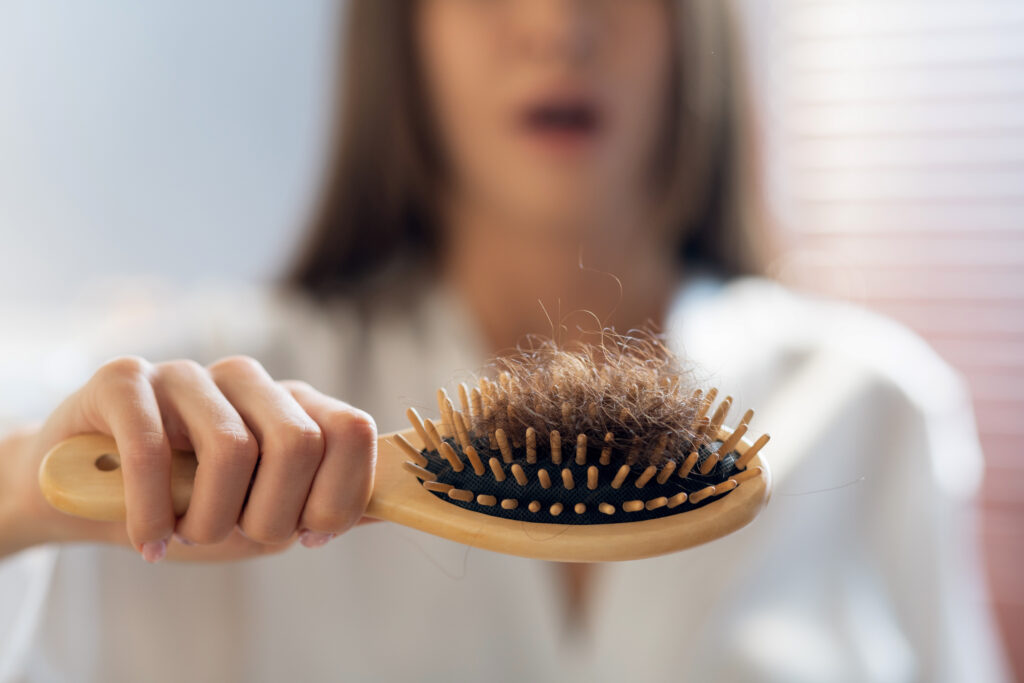
Describe the hair loss
When my oncologist explained the chemo to me, she said, “3 things are guaranteed: fatigue, appetite change and hair loss.”
For a second, I felt like the world was collapsing. Just for a second.
Then I came to my senses and realized, ‘It’s just hair. It will grow back.’
It was the least of my worries at that point. I just wanted the cancer gone.
I got a shorter haircut a few days later. About a week after that, I buzzed it. I was ready to get it over with. I wanted to see if I could rock it or not.
I went to get the clippers. My mom did it, and my boyfriend was there for moral support.
I knew the only way I would go through with it was if I absolutely had to, so I was like, “Get me the scissors.” I took the dull kitchen scissors to my hair.
I gave myself a terrible, ridiculous haircut. I was laughing hysterically, and it loosened the tension a little bit. Then it had to come off.
We buzzed it, and for a second I was shocked. I had to make sure it was me. I didn’t cry and break down. I just had to adjust.
It was new and different. I got used to the buzzed hair. Some days, I miss my hair, but it’s not that big of a deal to me.
What’s ironic is I never actually lost my hair. That’s super rare because I heard the Adriamycin is 99% supposed to cause hair loss. I guess I didn’t have to buzz it, but oh well. No one could’ve known.
It works out, though, because I almost wanted to look how I felt. It’s a little bit thin right now, but it’s growing back. I’m really glad that I shaved it. It taught me a lot of life lessons. I’m ready for it to grow back now, though.
»MORE: Dealing with hair loss during cancer treatment
Support system and caregivers
I have incredible parents. I have a great relationship with both of them. I don’t know what I would’ve done without them.
They’ve been absolute rocks throughout this experience. They’ve kept it together for me. If I saw them lose it, it would’ve been hard for me. They were able to stay strong and be there for me. That was so important.
My boyfriend, Brian, has been amazing. I love him more than anything. My parents both work, so my mom was going to take off.
At the beginning, she was on summer break because she’s a teacher, but when she had to go back, she was nervous because she didn’t want me to be alone.
Luckily, he was around. He was with me every day, so he was my primary caregiver throughout the fall. In the summer, he was always around as well. He came to every appointment and everything.
I couldn’t have done this without them. Extended family reached out. I had friends reach out, too. A lot of people who I didn’t expect to stepped up, and some people I expected to didn’t.
Some people just wanted the attention of being friends with a cancer girl, but most people were so amazing.
Advice for people who want to help patients but don’t know how
Some people reached out appropriately, some didn’t, and some didn’t reach out at all. I don’t blame the ones that didn’t.
I think they just didn’t know what to say. I don’t think I would know what to say in this situation had I not been through it.
The best thing to do is to just reach out. A simple ‘I’m here for you. If you need to talk or if you need something, don’t hesitate to ask me.’
Those were the best messages I got, as opposed to people who were just messaging to ask me what was going on.
My aunt sent me a book in the mail called “How Not to Die on Chemo.” Now I laugh about it, but at the time, I was so mad. I threw it out the window. I didn’t appreciate it.
People just don’t know sometimes. Everything comes from love, and I have to remember that, but some people just need a little help knowing how to help.
It’s not hard for me to ask for help, so I appreciated the ball being in my court. I’m a very open book. Everyone knows how I’m feeling at all times pretty much.
Finding your cancer community
I tried hospital support groups. I went to everything. I did meditation classes, art therapy, music therapy, you name it.
Unfortunately, there wasn’t anyone else my age in those groups, and there wasn’t even anyone with lymphoma, but it was still nice.
I would suggest to anyone to do the classes and connect with people that way. When I realized I wasn’t going to connect with anyone my age with my diagnosis there, though, I started looking elsewhere.
Sloan Kettering has a really cool app. It’s almost like a dating app for patients. It connects you with other patients. It’s secure and through the hospital. They give you a medical password and all that.
It matched me with one girl named Kelly. I messaged her. She’s one of my closest friends now. We’ve met in person. She was so incredibly crucial to my well-being. She has been everything to me.
I’ve needed her and leaned on her more than anyone else. Everything about our stories is so similar.
We would FaceTime twice a week to vent, laugh and talk about what we were going through.
We were each other’s lifelines. An amazing friendship came out of that experience.
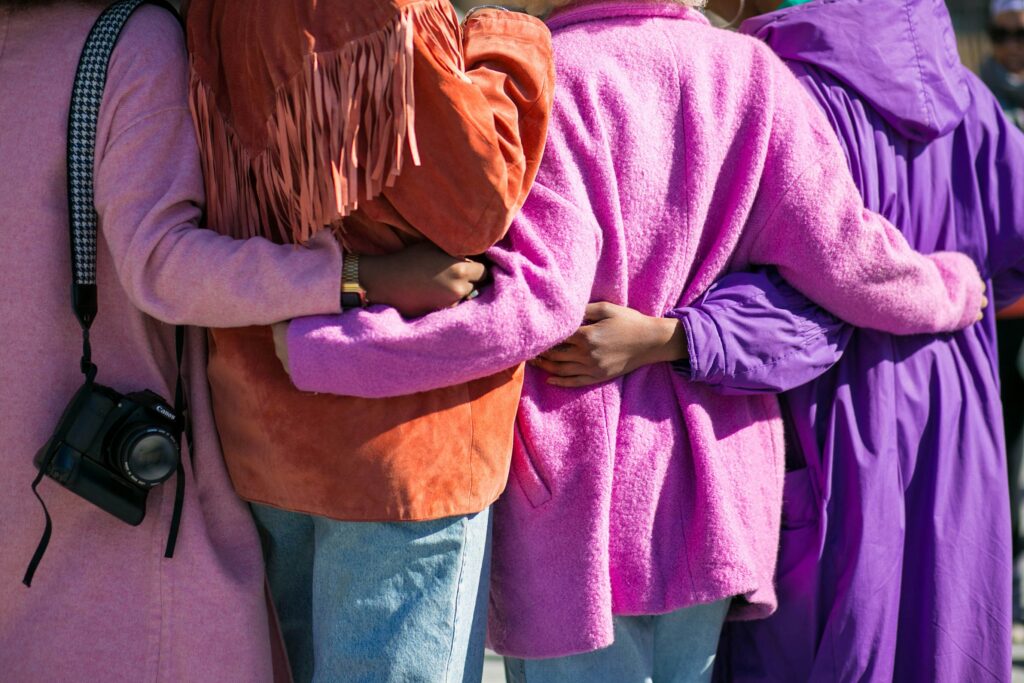
How did cancer affect your relationship with your significant other?
It’s really strengthened our relationship. It was very hard. I knew I loved him so much, but we had never been through anything like this before.
I didn’t know how he would react, but I knew I was going to respect it either way. He was just wonderful.
It was hard because I wanted to still prioritize our relationship throughout this whole thing, but I had to take care of myself.
Thankfully, he’s so amazing. He said, “This is your time. I’m here for you no matter what. Take as much time as you need, and we’ll get back to normal when we can.”
We’re very open and honest. That was key. Had I not been able to communicate how I was feeling throughout this, it would’ve gone another way.
I’m so thankful that our relationship was strengthened. I know I’m in the right relationship.
»MORE: 3 Things To Remember If Your Spouse Is Diagnosed With Cancer
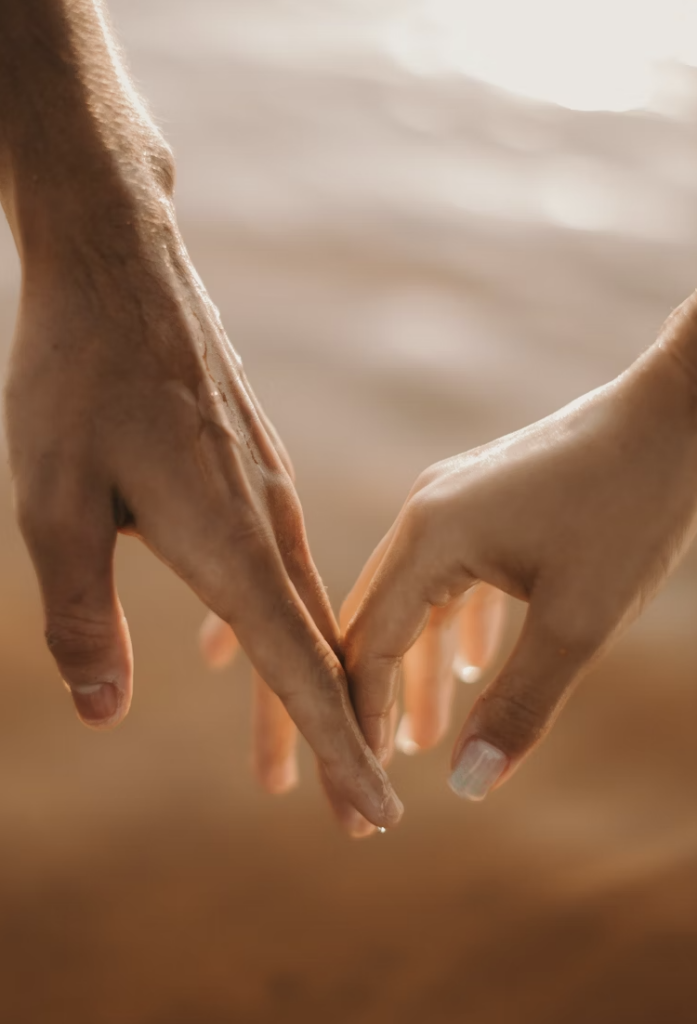
What advice do you have for other young couples?
Patience is key. Be open to serious communication and check-ins with one another. It can be very one-sided at times because the sick person is dealing with treatment.
That’s okay. It will pass. You need to prioritize yourself, and if your partner can’t handle that, you should probably reevaluate your relationship.
It’s going to take time to get back to normal — sexually, mentally, emotionally and in every way.
That’s normal. You just both need to give grace and be willing to work together.
Another thing is my boyfriend didn’t want to burden me with his problems and emotions because he thought that I was going through much worse.
If you’re the caregiver, just know that your partner still wants you to confide in them. Your problems are still valid even though your partner is fighting cancer.
New life perspective
I found more positives in this than negatives. To begin, I know that my innocence has been stripped away.
My naïve “I’m 20, and I’m invincible” outlook is gone. When this happened, it made me question a lot. I’m more cautious now. Time will heal that.
In general, it’s made me more compassionate and thoughtful of others. It’s so important not to judge people, because you never know what they’re going through.
I’m a psych major, and I’ve always had a deep care for people. This has just reinforced my desire to be in that field.
I’ve learned so many lessons in patience, compassion and communication. I’m going to take them with me for the rest of my life. I’m allowing this experience to shape my future for the better.
I was approached by a book publisher to write a book about my experience, and I’m in the middle of writing it. So many good things can come out of your experience. It’s all about how you perceive the situation.
One of the things I did was I kept a journal. I’ve written about my thoughts, feelings or anything just about every day. Part of my journaling is keeping track of the good things that have come out of this.
My list is so much longer than I could’ve imagined. It’s something I recommend to anyone.
What advice do you have for someone who has just been diagnosed?
You are going to feel a lot of different feelings, but all of them are valid. Let them happen. Fear, anxiety, worry, happiness, annoyance, confusion, sadness or any emotion you feel is okay. You’ll get through it.
The only way you can go is forward, so keep going. You have a community of people who are waiting to support you and love you.
I hope you’ll connect with those around you and other cancer survivors, because we are here for you.
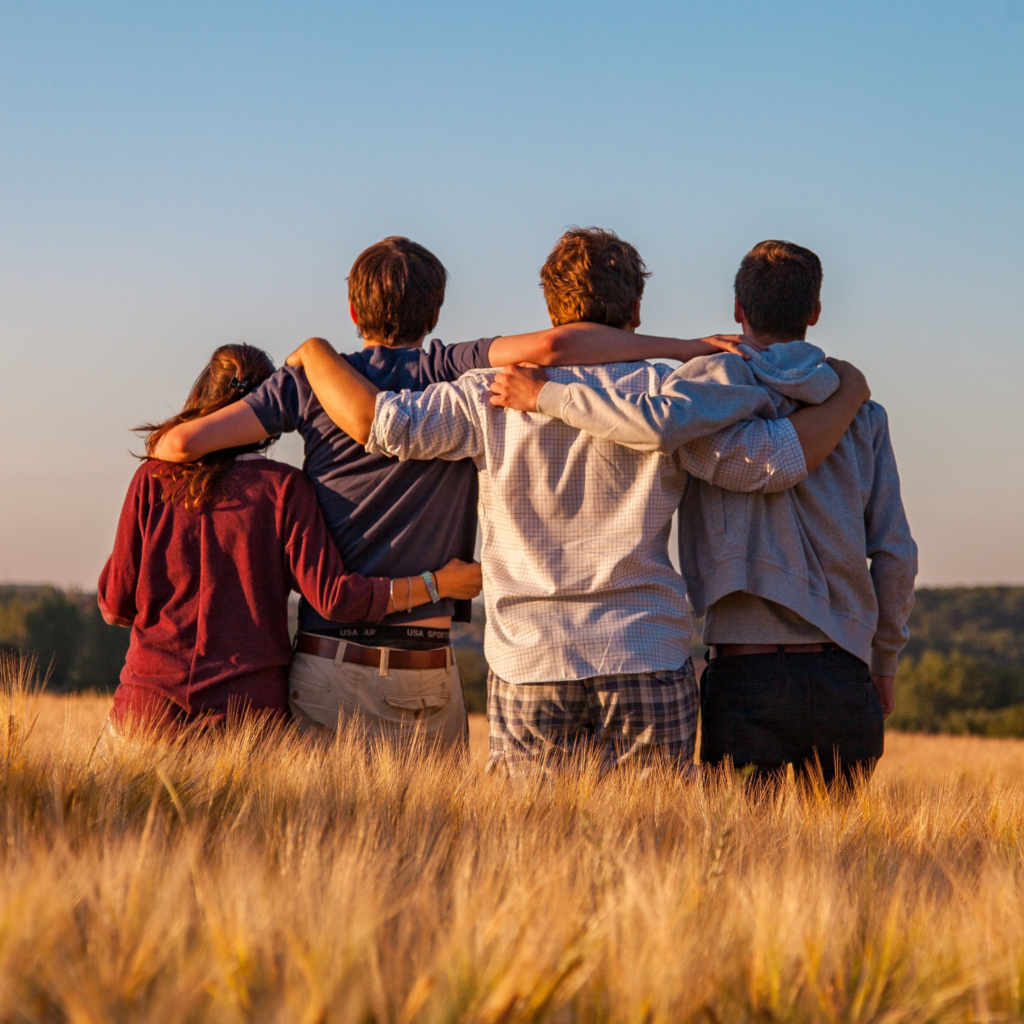
Inspired by Lisa's story?
Share your story, too!
Hodgkin’s Lymphoma Stories
Jessica H., Hodgkin’s Lymphoma, Stage 2
Symptom: Recurring red lump on the leg (painful, swollen, hot to touch)
Treatment: Chemotherapy
Riley G., Hodgkin’s, Stage 4
Symptoms: • Severe back pain, night sweats, difficulty breathing after alcohol consumption, low energy, intense itching
Treatment: Chemotherapy (ABVD)
Amanda P., Hodgkin’s, Stage 4
Symptoms: Intense itching (no rash), bruising from scratching, fever, swollen lymph node near the hip, severe fatigue, back pain, pallor
Treatments: Chemotherapy (A+AVD), Neulasta
